模拟集成电路行业专题:信息化建设与自主可控拉动需求
1、模拟集成电路产品种类繁多,设计难度大
1.1. 模拟集成电路的分类
根据WSTS分类标准,半导体主要可分为集成电路、分立器件、传感器和光电器件四类。 其中,集成电路可细分为模拟集成电路、数字集成电路和混合集成电路三类。 其中,模拟集成电路主要是指集成了电阻、电容、晶体管等,用于处理连续功能模拟信号(如声音、光、温度等)的集成电路。
1.2. 模拟集成电路主要产品类型
模拟集成电路又可分为电源管理集成电路(电源管理芯片)、放大器、接口集成电路和微波集成电路四大类。 每个类别涵盖多个细分产品类别。 其中,电源管理芯片是模拟集成电路最大的细分市场,应用范围广泛,子类别众多。 产品类型包括电池管理集成电路、电压基准电路、电源监控电路、LCD/LED驱动器、电机驱动器、稳压器和电源模块(包括DC/DC转换器)。 放大器主要包括运算放大器、通用放大器、高速放大器、功率放大器、精密放大器、差分放大器、仪表放大器、可变增益放大器和特殊放大器(变频器、隔离放大器、线路驱动器、对数放大器、采样保持放大器)放大器、跨导放大器、跨阻放大器、视频放大器等)等。接口集成电路主要包括时基电路、数据开关、多协议接口集成电路、隔离器集成电路、电路保护集成电路、电平转换器、开关和数据转换器包括模/数转换器(ADC)、数/模转换器(DAC)、集成开关、传感器模拟前端、数字电位器等细分类型。
微波集成电路是处理射频信号的模拟集成电路,可分为混合微波集成电路和单片微波集成电路。 自1950年以来,微波器件经历了从同轴器件到微带器件再到单片微波集成电路的演变。 单片微波集成电路也经历了从硅基衬底到砷化镓衬底再到氮化镓衬底的演变。 底部的演变。 微波集成电路的主要厂家有ADI(赫梯科技)、TI、Microsemi、MACOM等。微波集成电路可细分为:低噪声放大器、限幅器、衰减器、射频混频器、频率合成器、倍频器、I/ Q调制解调器、锁相环、移相器、定时和时钟、射频收发器、射频开关、可调谐滤波器等。
一般来说,模拟芯片细分领域多样,型号众多,单个厂商很难覆盖所有类型的模拟芯片。 模拟电子系统首先需要收集和提取信号。 通常信号来自测试各种物理量的传感器和接收器,或者来自用于测试的信号发生器。 在实际场景中,传感器或接收器提供的信号幅度通常较小,容易受到噪声干扰。 因此,在处理信号之前,需要对信号进行预处理,通过隔离、滤波、阻抗变换等手段将信号提取、放大,然后进行信号运算、转换、比较等不同处理。 最后一般需要功率放大来驱动负载。 如果需要进行数字处理,则需要将预处理后的模拟信号通过A/D转换电路转换为数字信号。
按照产品功能,模拟集成电路可分为电源管理芯片和信号链芯片两大类。 信号链模拟芯片是指具有发送和接收、转换、放大、滤波模拟信号处理能力的集成电路。 按功能划分可分为线性产品、转换器产品、接口产品、射频和微波等。其中,线性产品主要包括放大器和比较器; 电源管理芯片应用范围广泛,子类别众多,包括AC/DC转换器、线性稳压器、LED驱动器、电机驱动器、功率监视器、过流保护、过压保护等。
1.3. 模拟信号与数字信号转换原理
模拟信号:连续变化的物理量信息,如温度、湿度、压力、长度、电流、电压等,在一定范围内可以有无穷多个不同的值; 模拟信号信息密度较高,能更好地反映物理量值的现实性,且模拟信号的处理比数字信号更简单。 数字信号:离散信号,最常见的形式是用二进制数表示; 数字信号在传输过程中抗干扰能力强,传输效率高,可以通过半导体存储器进行存储,适用于通信、信息处理等领域。 将模拟信号转换为数字信号有三个基本过程:采样、量化和编码。 采样:以一定间隔的一系列信号样本代替原始的时间连续信号,使模拟信号离散化。 量化:用有限个幅值来逼近原来连续变化的幅值,将模拟信号的连续幅值变成有限个有一定间隔的离散值。 编码:按照一定规则,将量化值用二进制数表示,然后转换成二进制或多值数字信号流。
模数(A/D)转换电路通过单个IC芯片将输入的模拟电信号转换成脉冲形式的数字信号输出。 从电路结构来看,目前的A/D转换功能主要有闪速式和电容积分式。 、逐次逼近型、流水线型和Σ-△型等。不同电路结构的A/D转换器具有不同的性能特点。
通过调幅、调频、调相三步数字解调,将数字信号转换为模拟信号。 幅度调制是指载波的幅度随着基带数字信号的变化而变化。 例如,数字信号1由载波输出表示,数字信号0由非载波输出表示。 特点是信号容易实现,技术简单,但抗干扰能力较差; 频率调制是载波。 频率随着基带数字信号的变化而变化。 例如,数字信号1由频率f1表示,数字信号0由频率f2表示。 特点是信号容易实现、技术简单、抗干扰能力强; 相位调制是指载波的初始相位随基带信号的变化而变化。 例如,数字信号1对应相位180度,数字信号对应相位0度。 其特点是抗干扰能力强,但信号实现技术相对复杂。
1.4. 模拟集成电路与数字集成电路的特性比较
与数字集成电路相比,模拟集成电路具有设计难度大、应用范围广、应用周期长、可替代性低等特点。
1)设计难度大,凸显人才的重要性。
模拟芯片的设计需要额外考虑噪声、匹配、干扰等诸多因素。 它要求设计人员不仅熟悉集成电路设计和晶圆制造的工艺流程,而且还要熟悉大多数元件的电气和物理特性。 再加上模拟芯片辅助设计工具少、测试周期长,培养一名优秀的模拟芯片设计师往往需要10年甚至更长的时间。 芯片设计人才的管理是模拟芯片企业发展的决定性因素之一。 。
2)下游应用广泛
模拟集成电路按细分功能还可进一步分为线性器件(如放大器、模拟开关、比较器等)、信号接口、数据转换、电源管理器件等诸多类别。 根据最终产品,每个类别都有不同的性能要求。 不同系列有广泛的应用范围。
3)产品生命周期长
模拟芯片强调可靠性和稳定性,追求高可靠性、低失真和低功耗,量产后通常使用寿命在10年以上; 而数字芯片强调计算速度和成本比,必须不断采用新的设计或新的工艺。 为满足下游需求的变化,生命周期通常只有1至2年。
1.5. 模拟集成电路主要流程
根据CETC24发布的《高性能模拟集成电路工艺》,目前模拟集成电路的主要制造工艺包括Bipolar(双极工艺)、CMOS、DMOS、BiCMOS和BCD工艺。 其中,双极工艺制造的器件具有速度高、驱动能力强、仿真精度高等优点,但在功耗等方面难以满足大规模系统集成的要求。 采用CMOS工艺制造的模拟器件具有功耗低、集成度高、抗干扰能力强等优点,但速度低、驱动能力差。 DMOS工艺具有低导通电阻、高耐压能力、高速开关能力和高温性能,广泛应用于功率放大、开关和DC-DC转换器等领域。 BiCMOS工艺是在现有CMOS工艺的基础上,融入了双极工艺。 双极器件和 CMOS 器件同时在同一芯片上制造。 它结合了双极型器件的高跨导和强大的负载驱动能力与CMOS器件的高集成度和低成本。 功耗优势使其广泛应用于无线通信、毫米波雷达等下游领域。
BCD工艺技术是SGS Thomson在20世纪80年代中期发明的一项非常创新的集成电路工艺技术。 它可以将具有精确模拟功能的双极器件和数字设计的CMOS器件集成在同一芯片上。 高电压、高功率结构的器件和DMOS器件。 同时,BCD工艺结合了低噪声、高精度、高电流密度的双极晶体管、高集成度、低功耗、易于逻辑控制的CMOS晶体管以及高耐压的DMOS器件。 、开关速度快、输入阻抗高、驱动能力强、热稳定性好等特点。 通过将不同功能电路集成在同一芯片中,减少了系统内部的互连,减少了电磁干扰,提高了系统的可靠性和稳定性,同时系统的功耗、体积、重量和总成本也得到了降低。减少。 总体表现出优异的综合性能,已逐渐成为高性能模拟集成电路的主要制造工艺。
2、模拟集成电路市场分析
2.1. 特殊需求占比稳定,国内替代空间广阔。
根据Frost & Sullivan和振华风光的招股书数据,2013年至2021年,全球模拟集成电路市场规模从401亿美元增长至586亿美元,复合年增长率为4.9%; 我国模拟集成电路市场规模全球最大占比超过60%,2021年市场规模将达到2731亿元,预计2025年将达到3340亿元。从全球模拟芯片终端来看应用领域,广泛应用于通讯、汽车、工业、消费电子、计算机、国防等领域。 模拟芯片市场集中度较低。 2021年,排名前两位的厂商德州仪器和ADI的市场份额分别约为19%和12.7%。 其他厂商的市场份额均不超过10%。 前十名厂商的市场份额合计为68%,竞争格局较为稳定。 高性能射频芯片和电源管理芯片是军用终端和系统的核心。 在装备信息化建设和自主可控需求的双重驱动下,国内模拟集成电路企业有望快速崛起。
军用芯片国产替代需求迫切,模拟集成电路是弥补短板的重点方向。 自20世纪90年代末以来,美国国会通过了一系列法案,禁止向中国出口航空航天技术和用于航空航天及其他军事目的的零部件。 美国商务部列出了对华出口管制清单。 同时通过施压等手段干扰他国军事、支持对华出口。 欧洲对华出口限制已持续半个多世纪。 先后有《巴黎协调委员会决议》和《瓦森纳协议》,多种零部件和材料被列入中国特别战略禁运清单。 除了西方国家的政策因素外,大多数进口电子元件都是塑料封装的工业和商业级。 其可靠性和环境适应性不符合我军要求,进口电子元件得不到技术支持和售后保证。 这也使得我国的军用芯片急需国产产品替代。 美国国防部发布的关键技术清单明确指出,在众多关键技术中,零部件的贡献最大。 受产业发展阶段等多种因素影响,我国电子元件行业在元件种类、品种、性能和质量可靠性等方面与国外产品相比存在较大差距。 尤其是集成电路等品类差距更大。 已成为制约我国武器装备发展的瓶颈之一。
根据《电子元件国产化替代情况探讨》,对某类设备采用进口电子元件国产化替代情况进行了统计。 与进口产品相比,在关键性能指标、质量可靠性、封装体积以及零部件国产化方面存在差异,缺乏产品使用经验是阻碍国产化的主要因素。 该类零部件国产化率约为35.27%。 根据《军用芯片发展现状与前景》,我国军用芯片进口替代空间每年超过200亿。 高性能模拟集成电路由于型号种类繁多、研发流程较长,较其他集成电路类别具有更大的国产替代空间。
2.2. 射频收发器及前端芯片市场
射频收发芯片和射频前端芯片是实现射频收发的基础。 它们扮演着雷达、通信、电子对抗等射频信号系统的“接收器”和“发射器”的角色。 它们转换、组合、过滤和消除信号。 干扰、放大,最终实现无线信号的接收和传输。 射频收发芯片接收来自基带芯片的数字基带信号,经过数模转换、混频、滤波、放大后传输至终端射频前端芯片。 终端射频前端芯片将信号放大后传输至天线; 在接收链路中,终端射频前端芯片将来自天线的微弱射频信号放大后传输至射频收发芯片。 射频收发芯片将射频信号放大、混频、滤波、转换为数字信号,发送至基带芯片进行处理。 ;电源管理芯片为发射链路和接收链路中的各个芯片提供电源分配。
传统的射频发射链由发射天线、隔离器、带通滤波器、振荡器、锁相环、调制环组成; 传统的射频接收链路由接收天线、带通滤波、低噪声放大器、增益调节、鉴频锁相和中放单元组成。
射频前端芯片主要包括终端功率放大器、终端低噪声放大器和终端射频开关。 终端功率放大器用于放大射频收发芯片发出的发射信号的功率,并通过天线发射信号。 终端低噪声放大器用于放大来自天线端的微弱射频信号,并将放大后的信号传输至射频收发芯片进行处理。 终端射频开关用于信道选择和天线收发切换。 随着5G网络的商用推广,射频前端芯片产品的应用领域将进一步扩大。 与此同时,5G时代通信设备中使用的射频前端芯片的数量和价值也将不断增加。 据QYR电子研究中心统计,2011-2020年全球射频前端市场年复合增长率为13.83%,2020年达到202.16亿美元。受益于5G网络商用建设,全球射频前端市场规模前端芯片市场将从2020年开始迎来快速增长。2018-2023年,全球射频前端市场预计将以16.00%的复合年增长率持续快速增长,预计接近美国2023 年将达到 313.1 亿美元。
全球射频前端芯片市场主要由欧美厂商占据。 国内厂商目前主要在射频开关和低噪声放大器方面实现技术突破,并逐步进行进口替代。 射频前端芯片行业的产品广泛应用于无线通信终端,行业战略地位将逐步提升。 国内射频前端芯片设计厂商也面临着巨大的发展机遇,其全球市场份额有望大幅提升。
线性产品是信号链模拟集成电路产品的代表器件。 其中放大器和比较器占2020年信号链模拟芯片市场的39%。放大器和比较器是通用产品,具有稳定的产业空间。 2021年全球放大器市场规模为57.36亿美元。根据业务增长报告,预计2027年市场规模将达到75.27亿美元,2021-2027年复合增长率为4.63%。根据Databeans数据其中,2020年ADI和德州仪器在放大器和比较器领域的全球销售收入分别为10.94亿美元和9.08亿美元,其收入份额遥遥领先于其他模拟集成电路制造商。 由于信号链技术壁垒较高,目前全球市场份额排名前十的厂商均来自欧洲、日本和美国,中国企业相对较少。 国内主要特种放大器供应企业有振华风光、成都华为、中国电子科技二十四所、中国电子科技五十五所、航天771所等。
2.3. 模数/数模转换芯片(ADC/DAC)市场
ADC和DAC是模数/数模转换芯片,属于信号链芯片的一种。 ADC的主要功能是将现实世界中产生的模拟信号,例如温度、压力、声音、指纹或图像,转换为更易于处理的数字形式。 。 DAC的作用与ADC相反,将数字信号调制为模拟信号; 从应用需求来看,ADC的总需求较高,占比接近80%。 ADC和DAC是现实世界和数字世界之间的桥梁。 它们是模拟芯片中最难的部分,被称为模拟电路皇冠上的宝石。 从特性上来说,ADC芯片可分为高速高精度、低速高精度、高速低精度。 有精密型和低速低精度型四种。
1996年,以西方国家为主的33个国家在奥地利维也纳签署了《瓦森纳协定》,规定了高新技术产品和技术的出口范围和国家。 其中,高端ADC属于出口管制产品,中国也受到限制。 作为其中国家之一,禁运主要涵盖精度超过8位、速度超过10MSPS的ADC。 全球ADC/DAC市场主要被美国TI、ADI、Maxim、Microchip以及日本瑞萨、罗姆半导体为首的海外龙头垄断。 高精度ADC/DAC是电子设备中的核心部件。 进入供应链后不会轻易被取代。 早期,国内设备制造商出于性能、质量等多方面考虑,通常会选择海外领先厂商的产品。 近年来,国内设备厂商逐渐开始采购国产芯片。 目前,我国工业级ADC/DAC企业主要有赛瑞普、上海贝岭、胜邦科技、讯芯微等厂商。 专业领域主要由国家级科研院所和企业主导,其中包括中国电子旗下的成都华华。 微,中国电子科技下属的24所、58所,航天科技下属的771所(西安微电子技术研究所)、772所(北京微电子技术研究所),以及天水749厂、锦州777厂等,此外,还涌现出真雷科技等领先的民营企业。
2.4. 电源管理芯片市场
据Frost & Sullivan统计,2021年全球电源管理芯片市场规模约为368亿美元,同比增长11.85%; 预计到2025年,全球电源管理芯片市场规模预计将达到526亿美元,2017-2025年年均复合增长率。 11.32%。 2021年,我国电源管理芯片市场规模约为132亿美元,同比增长11.80%; 预计到2025年,我国电源管理芯片市场规模将达到235亿美元,2017年至2025年年均复合增长率为12.44%,高于全球市场规模增速。
根据市场竞争格局,中国电源管理芯片市场可分为三个梯队。 第一梯队以海外厂商为代表,如德州仪器、高通、ADI、英飞凌等欧美领先企业。 第二梯队以胜邦科技为代表,本土龙头厂商以全志科技、威尔科技等国内龙头上市公司为代表,第三梯队由其他中小型电源管理芯片公司组成。
据前瞻产业研究院统计,2020年,欧美企业占据中国电源管理芯片市场约80%的市场份额,而中国前10名企业的市场份额合计仅为7.5%。 未来国产替代空间巨大。 特殊行业重点参与单位包括电科24所、电科58所、成都华为、振华风光、真雷科技、新雷能等。
2.5. 专用模拟集成电路主要供应商
特种模拟集成电路核心国家队主要包括中国电子科技集团、中国航天科技集团和地方国有企业。
中国电子科技集团:
(1)中国电科第二十四研究所/中国电科芯片技术(集团)有限公司:中国电科第二十四研究所是我国最早成立的专业半导体集成电路研究所之一。 成立于1968年,是我国唯一的模拟集成电路研究所。 电路专业研究院研制并制造了我国第一块硅单片集成电路。 其主要产品包括AD/DA转换器、高性能放大器、射频集成电路、驱动器等; 中国电子芯片技术(集团)有限公司融合中心电工技术二十四、二十六、四十四研究所研发团队涵盖射频/微波电路(低噪声放大器、射频开关、数控衰减器)、电源管理芯片(线性稳压器)、接口电路、模数转换器(ADC)等。据中电科芯片公司官网显示,公司目前拥有员工12000余人,国家及省级创新平台15个,1个上市公司、二级非上市控股公司17家。 总部位于重庆,业务布局分布长三角、京津翼、粤港澳大湾区、成渝经济圈等地区。 据中国电科二十四所2011年招聘公告显示,二十四所员工人数为1000余人。
(2)电科58所:1986年成立于江苏省无锡市,现有职工近4000人,其中各类专业技术人员占职工总数的75%。 中国电子科技有限公司58专注于数字和模拟集成电路的研发。 具有集成电路设计、制版、工艺、测试、封装、可靠性等完整的配套能力。 已通过ISO9001-2000质量管理体系认证; 中国电子科技股份有限公司 58 收入 模拟集成电路产品主要包括总线接口电路、数模/模数转换芯片(AD/DA)、电源管理电路、滤波器、隔离器、模拟开关、功率放大器等
(3)中国电子科院55所/国机南方集团有限公司:中国电子科院55所以固态功率器件、射频微系统、光电显示与检测为主要业务方向,形成了从材料、芯片、器件到模块组件。 产业链完整; CETC 55的模拟集成电路产品主要包括射频功率放大器、数控衰减器、数字延迟器、数字移相器、低噪声放大器、射频开关、射频前端芯片、接口芯片等。据官方介绍国基南方公司网站显示,现有员工6000余人,其中高级工程师以上职称人员500余人,集团公司首席科学家4人,首席专家3人,享受政府特殊津贴49人。 江苏省新世纪百千万人才工程国家选拔2人。
中国航天科技集团公司:
(1)航天771所(西安微电子技术研究所):隶属于航天九院,始建于1965年,主要从事计算机、半导体集成电路、混合集成等方面的研究与开发。 是全国唯一一家集计算机、半导体集成电路、混合集成研究与生产于一体的大型专业研究所; 航天771所的模拟与混合集成电路产品主要包括滤波器、DC/DC转换器等。根据中国航天电子技术研究院官方微博,771所现有员工5325人,专业技术人员2549人,博士65人,博士886人。大师们。 拥有中、高级职称技术人员664人,其中研究员,享受国家政府特殊津贴8人。
(2)航天772研究所(北京微电子技术研究所):成立于1994年,隶属于中国航天科技集团公司第九研究院。 是国家投资建设的军用电子元件研制单位。 其总部位于北京。 It has a branch in Xi'an, with 5,325 employees, 2,549 professional and technical personnel, 65 doctors and 886 masters. There are a total of 664 technical personnel with intermediate and senior professional titles, including researchers, and 8 people enjoy special allowances from the national government. , with domestic first-class integrated circuit design center, packaging testing and failure analysis center, and special device production line. Aerospace 772 Institute has passed the GJB9001C-2017 quality system certification, national confidentiality qualification certification, military large-scale integrated circuit production line certification, diode and triode military standard line certification, and occupational health and safety and environmental management system certification; Aerospace 772 Institute focuses on integrated circuits and microsystems With the research and development of modules and semiconductor discrete devices, the main products of analog integrated circuits include analog-to-digital/digital-to-analog converters (AD/DA), buses and interfaces, radio frequencies and microwaves, and power management chips; digital and other integrated circuits mainly include microprocessors system (SoC), field programmable gate array (FPGA), memory, general logic, ASIC and discrete devices, etc., a total of more than 300 kinds of aerospace/military shelf products in 16 categories, and the downstream covers include aerospace, aviation, electronics, shipbuilding, Weapons and nuclear industry and other fields.
Other local state-owned manufacturers:
(1) Tianshui Tianguang Semiconductor Co., Ltd. (State-owned No. 871 Factory): Affiliated to Shaanxi Electronic Information Group, located in Tianshui City, Gansu Province. It is one of the earliest key enterprises in my country to develop and produce digital integrated circuits and new semiconductor devices. Now it There are more than 800 employees, including nearly 300 engineering and technical personnel; the company has a 4-inch wafer production line, a 3-inch wafer production line and a packaging, testing, and reliability screening production line. It has an annual production capacity of 10 million integrated circuits and 1.2 billion semiconductor discrete devices; the company's main products are digital integrated circuits, analog integrated circuits, and semiconductor discrete devices, and has developed and produced more than 700 types of integrated circuits and more than 300 types of semiconductors. Discrete device products, among which analog integrated circuit products mainly include high-speed/low-noise/general-purpose operational amplifiers, voltage comparators, differential amplifiers, time base circuits, voltage reference circuits, etc.
(2) Tianshui 749 Electronics Co., Ltd. (State-owned 749 Factory): Located in Tianshui City, Gansu Province, it is one of the earliest enterprises in my country to develop and produce integrated circuits. It currently has 475 employees and 120 professional and technical personnel of various types. Its main products include three series of analog integrated circuits, hybrid integrated circuits, and DC/DC microcircuit modules with more than 1,500 varieties.
(3) Jinzhou Qiqiqi Microelectronics Co., Ltd. (state-owned Qiqiqi Factory): formerly affiliated to Jinzhou Huaguang Power Electronics (Group) Company, it is one of the first batch of designated analog integrated circuit production plants confirmed by the country. It has 40 More than 10 years of production history. There are currently three production lines for monolithic analog integrated circuits, hybrid integrated circuits and microcircuit modules. The main products are widely used in aviation, aerospace, shipbuilding, electronics, communications, industrial automation and other fields, and have been supporting the "Dongfanghong" broadcast communication satellite and the "Shenzhou" manned spacecraft.
3. Analog integrated circuits play an important role in military electronics, and national defense informatization drives demand growth.
At present, my country's weapons and equipment construction is still in a critical period of compensatory development. In the first 20 years of the 42 years of reform and opening up, the national strategy centered on economic construction, with national defense and military construction giving way to economic development. Military spending was significantly reduced, and the research and development and production of advanced weapons and equipment were suppressed. Since 1999, based on the economic foundation of more than 20 years of reform and opening up, the military industry has launched a process of rapid compensatory development. We judge that my country's national defense science and technology industry will still be in a critical period of compensatory development in the next ten years. Compared with major countries in the world, my country's defense expenditure accounts for a low amount of gross domestic product (GDP) and still has great growth potential. According to statistics from the Stockholm International Peace Research Institute, China's defense expenditure accounted for 1.74% of GDP in 2021, which is lower than the United States, Russia, India, the United Kingdom and France, and higher than Japan and Germany. After the outbreak of the Russia-Ukraine conflict, global armaments have been on the rise; according to People's Daily Online, at the NATO summit in June 2022, the NATO summit proposed a goal of reaching 2% of GDP in national defense expenditures by 2024.
Military electronics is the cornerstone of national defense information construction and the core of high-end weapons and equipment. Military electronics not only exists as an independent industrial cluster, but the electronic information technology, components and equipment it involves also serve other industrial clusters such as aerospace, aviation, weapons and ships, and provide the basis for the transformation of aircraft, ships, satellites and other military equipment from mechanization to The information transformation provides technical and equipment support. Against this background, electronic information equipment represented by radar, communications, electronic countermeasures, etc. is developing rapidly. According to "China's National Defense in the New Era" released on July 24, 2019, the proportion of equipment expenses increased from 33.2% in 2010 to 41.1% in 2017. From 2012 to 2017, the average annual growth rate of defense expenditure was 9.59%, while the average annual growth rate of equipment expenses reached 13.05%, exceeding 3.46 percentage points. Equipment procurement costs are expected to further increase.
3.1. Military communications: Analog integrated circuits are an important cornerstone of communication systems
3.3.1. There are many types of military communications, the core of which is the reception and transmission of signals.
According to "Military Communication System", military communication systems can be divided into various types according to different classification methods. According to the transmission channel, they can be divided into radio communication (short wave, ultra-short wave, microwave, satellite, scattering, etc.) and wired communication. According to the communication range It can be divided into strategic communication, operational communication and tactical communication. According to the movement state of the communication terminal, it can be divided into fixed communication, mobile communication and mobile communication. According to the different signal transmission methods, it can be divided into analog communication and digital communication. The sending and receiving of signals is the core of military communication systems. The transmitting circuit of a typical digital communication system performs carrier circuit mapping on the information to be transmitted and then sends it to the transmission medium. The mapped signal can be divided into analog and digital signals according to the value method of the parameters. The value range of the analog signal parameters It is continuous and infinite, while the value of digital signal parameters is limited. Therefore, when the digital signal is transmitted in the other party's communication system, the analog signal needs to be converted from digital to analog to digital through a codec chip or AD/DA chip.
In the sending and receiving system, important signal processing also includes (1) source encoding and source decoding. The function of signal encoding is to transform the signal output by the signal source into a digital signal suitable for transmission by the digital communication system. During the transformation process Try to remove redundant signals as much as possible to improve the transmission efficiency of the system; source decoding is to restore the signal output by the source encoder to the input signal. Encoding and decoding require the required analog/digital encoding and decoding chips. In many cases, the encoding and decoding chips integrate AD/DA chip functions. (2) Digital modulation and demodulation, using carrier modulation technology to convert the digital baseband signal to be transmitted into a waveform suitable for channel transmission. According to "Structure and Chip Design of an FSK Digital Demodulator", digital modulation and demodulation The working principle is that after the antenna receives the RF signal, after off-chip impedance matching, it enters the low-noise amplifier, and then enters the mixer. The mixed output signal passes through the filter and enters the limiter for limiting amplification and phase shifting. Then it enters the demodulator for demodulation at the same time as another output signal.
3.3.2. Take data link as an example: Communication system construction drives demand for analog integrated circuits to grow
Data link is one of the important directions for the development of military communication equipment. It relies on computer network technology, communication technology, and application protocols to realize data linking and exchange among various units of military operations, so that the information of independent combat units can be connected and coordinated with each other to form an organic combat whole. It can be used across services and maintain confidentiality. It has the advantages of strong stability, strong anti-interference ability, and has navigation and identification functions.
As the first country to study data links, the US military has many data link models. Taking airborne data links as an example, its main uses include command and control of aircraft by ground command posts, and aircraft completing ground and sea strike missions. According to the "Analysis of the Current Situation and Development Trends of Airborne Data Links", the airborne data links already equipped by the US military include Link-4, Link-11, Link-16, and Link-22. Among them, Link-4 began to be equipped with the US Navy in the late 1950s. This data link uses one-way time division multiplexing technology. Its functions include sending combat aircraft navigation instructions and commanding carrier-based aircraft in air-to-air combat; Link-11 is mainly used for The US Navy can send and receive radar intelligence and share battlefield situations. It includes two versions of TADIL-A and B, which are used in aircraft, ships and road-based platforms respectively; Link-16 is a confidential, reliable and anti-jamming airborne data link currently equipped with the largest number of equipment in NATO and the US military. This data link can process standard messages and voice, and is suitable for battlefield situation sharing and collaborative operations between various services (army, navy, air force) during joint operations; Link-22 is a data link that the United States and NATO began to develop in the 1980s. The new tactical data link is a confidential and anti-jamming communication system, mainly equipped on aircraft, ships, and shore-based centers. As the requirements for operational range and transmission of information increase, the US military has developed Tactical Targeting Network Technology (TTNT), Inter-Flight Data Link (IFDL) and Multipurpose Advanced Data Link (MADL). Tactical targeting network technology (TTNT) uses Internet protocols and Ad hoc technology to provide aircraft with tactical positioning, composite tracking, targeting and strike technologies, and is suitable for future air combat platforms; the inter-machine flight data link (IFDL) is only equipped on F-22 战机,为F-22 编队成员提供高可靠及灵活机动的通信手段;多用途先进数据链(MADL)专为F-35战机设计,具有高宽带、高速率、低截获等特点,主要用于各编队成员之间共享战场态势等信息。
据Polaris market Research 数据显示,2022 年全球军用数据链市场规模约为81.3 亿美元,预计2030 年将达到117.7 亿美元,2022-2030 年复合增速4.72%。 据国防科学技术大学《战术数据链组网技术研究》,我国各军兵种数字化建设起步较迟。由于数据链相关技术被前苏联视为国土防空的重要武器,拒绝对外提供, 因此我国并没有从前苏联得到相关的系统和技术援助。20 世纪60 年代,根据国土防空作战发展的需要,我国在学习国外先进C3 I 系统的基础上,探索我国防空自动化系统的概念、体制与技术,并进行早期数据链的相关研究。 70年代末我国开始研制雷情-1号半自动防空情报指挥系统,该系统利用数据链实现了各雷达站与防空指挥中心的对接,可以实现空情信息的传递和自动处理与显示,提高空军国土防空作战能力。
全部评论(0条)
推荐阅读
-
- 模拟集成电路行业专题:信息化建设与自主可控拉动需求
- 根据WSTS分类标准,半导体主要可分为集成电路、分立器件、传感器和光电器件四类。 其中,集成电路可细分为模拟集成电路、数字集成电路和混合集成电路三类。 其中,模拟集成电路主要是指集成了电阻、电容、晶体管等,用于处理连续功能模拟信号(如声音、光、温度等)的集成电路。
-
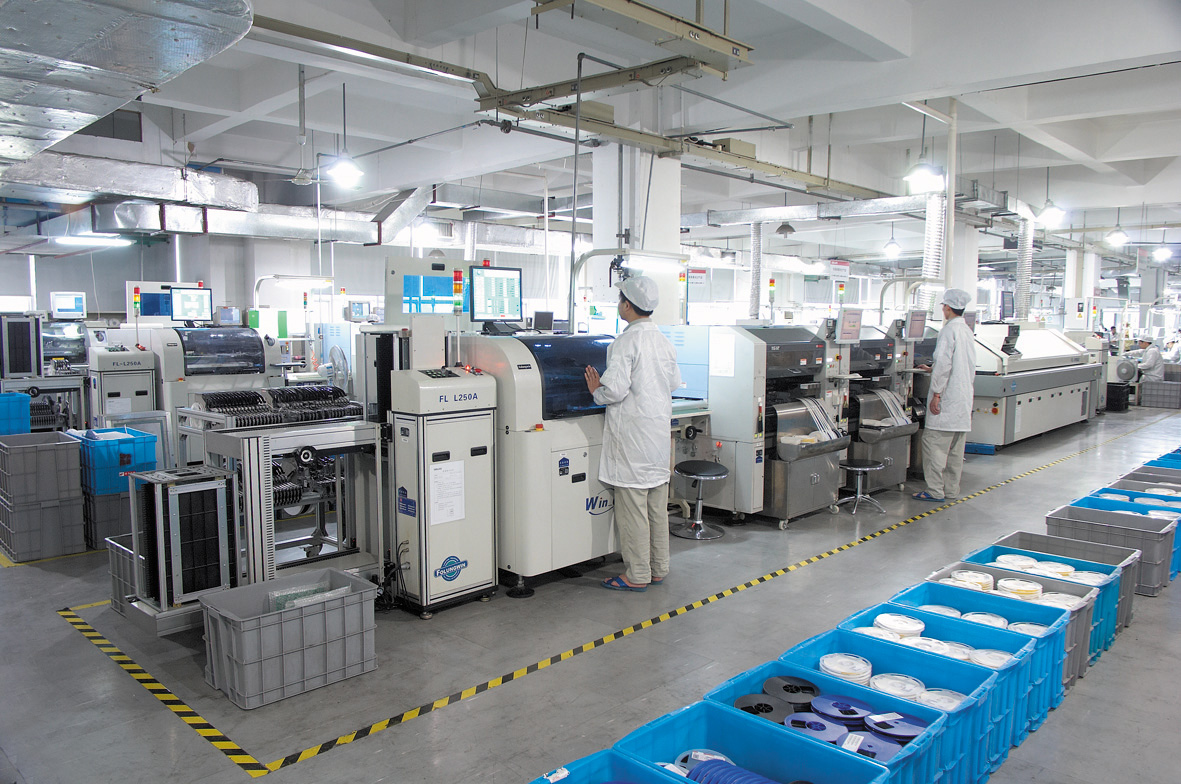
- 天津加速AI芯片研发布局夯实自主可控软件基础 仪器行业如何保障软件可控?
- 仪器行业应加强对软件的自主研发能力,减少对外部软件的依赖。通过建立专业的软件开发团队,开发具有自主知识产权的操作系统、应用程序和控制软件,确保软件的安全性和可控性。
-
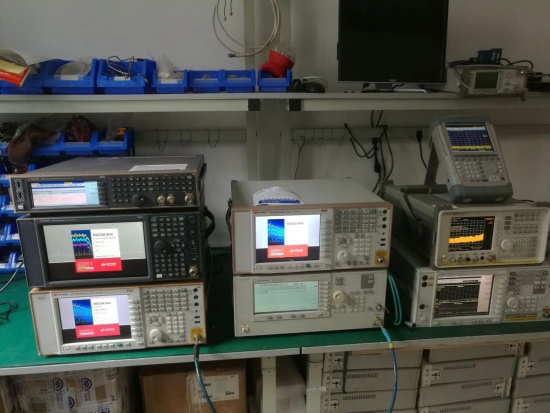
- 中央强调打造自主可控产业链重要性 健全重点工业领域产业链发展仪器行业如何布局?
- 仪器行业的布局还需紧密结合国家战略,积极响应一带一路倡议,探索国际合作新模式。通过海外并购、建立研发中心等方式,获取先进技术和管理经验,提升我国仪器行业的全球竞争力。
-

- 实验室信息化建设的意义
- 通过技术实施检验业务全流程管控,包括任务的登记、分配,样品接收,现场采样,检测结果录入,报告编制、签发、输出与存档,业务流程中的审核与权限控制。
-

- 中国超高速纯硅调制器获重大突破 芯片自主可控获利器?
- 我国超高速纯硅调制器的重大突破,是技术领域的重要进展,对芯片产业具有重要意义。 超高速纯硅调制器是用于光信号调制和传输的关键光电器件。
-

- 《信息化标准建设行动计划(2024—2027年)》,信息化标准建设行动如何提升仪器产业的竞争力?
- 近日,中央网信办、市场监管总局、工业和信息化部联合印发《信息化标准建设行动计划(2024—2027年)》(以下简称《行动计划》)。
-

- 科技部:疫情防控专题企业技术需求与科技人才信息交互服务
- 科技部引智司与火炬中心共同开通了“企业技术需求与科技人才信息交互服务平台”,首批将开展疫情防控专题企业技术需求与科技人才信息交互服务相关工作。现将有关事项通知如下。
-

- 中央网信办等部门印发《信息化标准建设行动计划》 建设网络强国仪器行业如何积极参与
- 为深入贯彻落实《“十四五”国家信息化规划》和《国家标准化发展纲要》的任务安排,国家网信办、国家市场监管总局、工业和信息化部日前联合印发《信息化标准建设行动计划(2024-2027年)》。
-
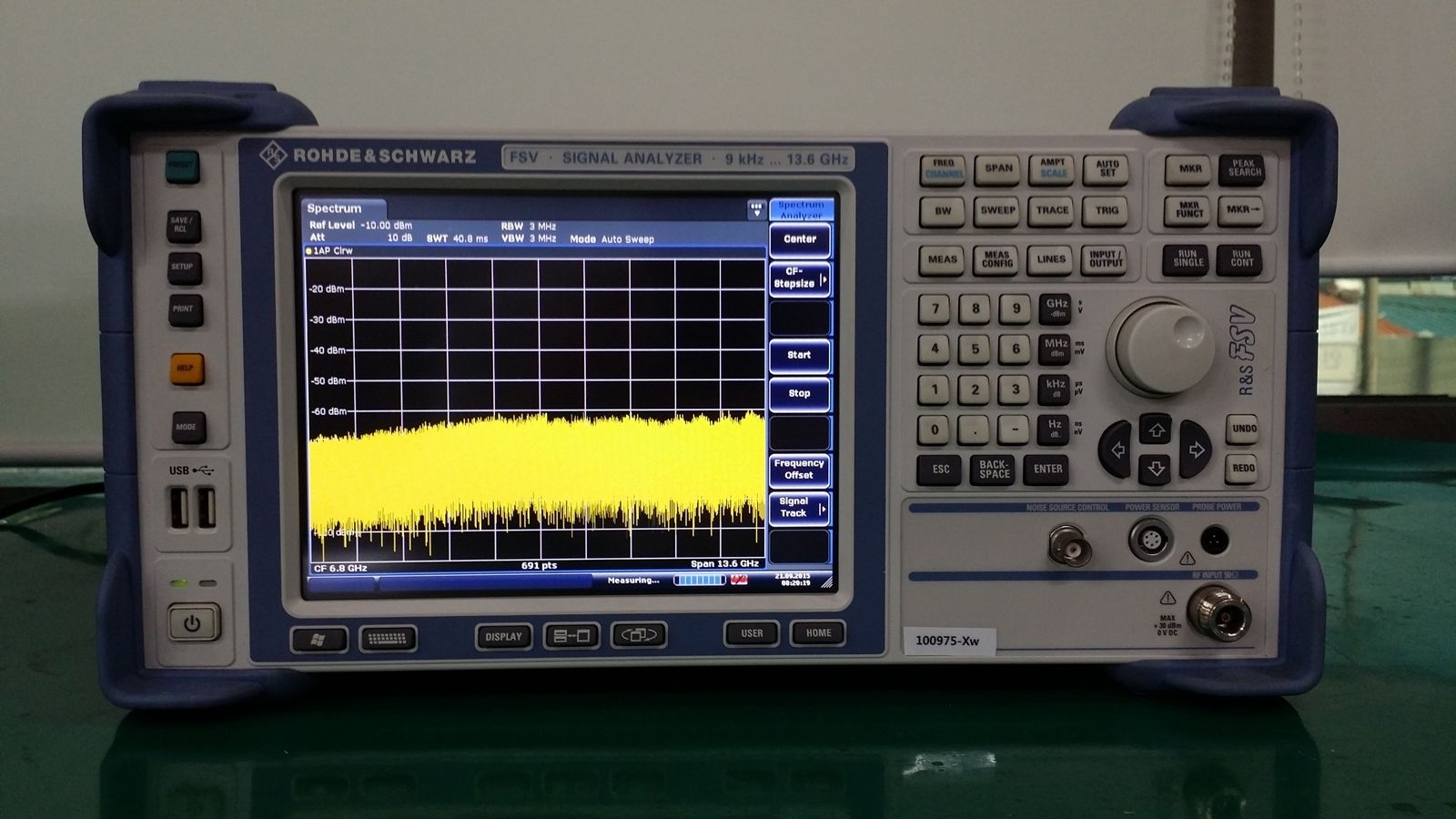
- 长三角致力打造自主可控全产业链机器人 需要重点发展哪些配套仪器?
- 传感器是机器人感知外部环境的“感官”,对于提高机器人的智能化水平至关重要。长三角地区应重点发展各种类型的高精度、高可靠性传感器,包括视觉传感器、力觉传感器、温度传感器等。
-

- 基金委发布“模拟集成电路敏捷设计方法与关键技术”专项项目指南
- 为推动我国集成电路EDA基础研究,促进集成电路技术发展,培养创新研究队伍,国家自然科学基金委员会信息科学部设立“模拟集成电路敏捷设计方法与关键技术”专项项目。
-
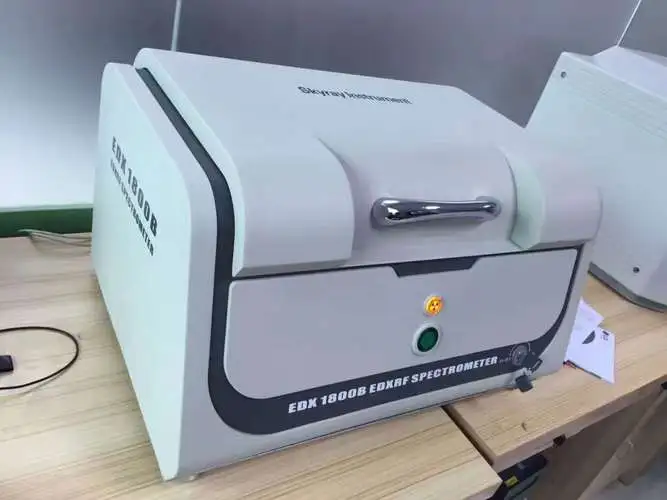
- 质量基础设施拉动产业供应链指导意见出炉 仪器行业能否受益?
- 近日,《质量基础设施带动产业供应链指导意见》正式发布,引发广泛关注。 该指导意见旨在推动我国高质量基础设施建设,提高产业供应链质量水平,从而促进经济发展和产业升级。
-

- 平稳运行超30天!广州抽水蓄能电站——自主可控励磁系统和调速器系统
- 南方电网公司在抽水蓄能成套控制系统设备国产化的关键技术研究应用上取得了重大突破
-
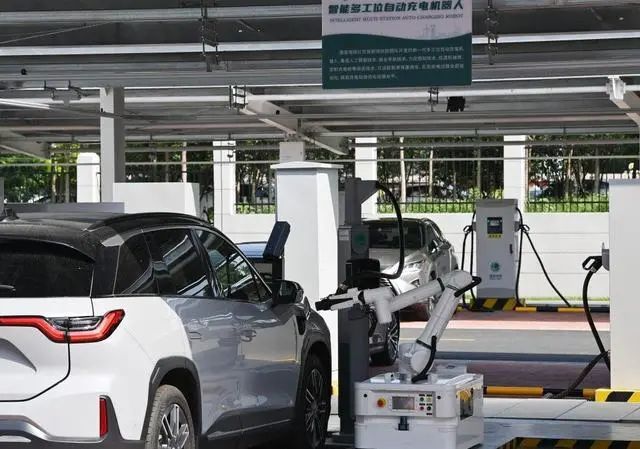
- 重庆计划2025年建设两千座超级充电站 仪器行业如何把握充电站庞大需求
- 重庆市政府办公厅近日印发实施新能源汽车便捷超充行动计划的文件,提出到2025年,重庆将建设超充站2000个以上、超充桩4000个以上。 此举旨在打造以增压为主体、新能源汽车与电网融合互动的优质充电基础
-

- 《仪器仪表行业信息化标杆企业访谈》
- 《信息化标杆企业访谈》是智邦国际推出的大型视频访谈活动,嘉宾由各行各业的董事、法人、高管组成,通过主持人与嘉宾深度交流,展示企业成功转型信息化管理的前瞻思想、真实经历和成功经验,引领更多企业管理创新。
①本文由仪器网入驻的作者或注册的会员撰写并发布,观点仅代表作者本人,不代表仪器网立场。若内容侵犯到您的合法权益,请及时告诉,我们立即通知作者,并马上删除。
②凡本网注明"来源:仪器网"的所有作品,版权均属于仪器网,转载时须经本网同意,并请注明仪器网(www.yiqi.com)。
③本网转载并注明来源的作品,目的在于传递更多信息,并不代表本网赞同其观点或证实其内容的真实性,不承担此类作品侵权行为的直接责任及连带责任。其他媒体、网站或个人从本网转载时,必须保留本网注明的作品来源,并自负版权等法律责任。
④若本站内容侵犯到您的合法权益,请及时告诉,我们马上修改或删除。邮箱:hezou_yiqi

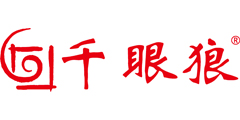
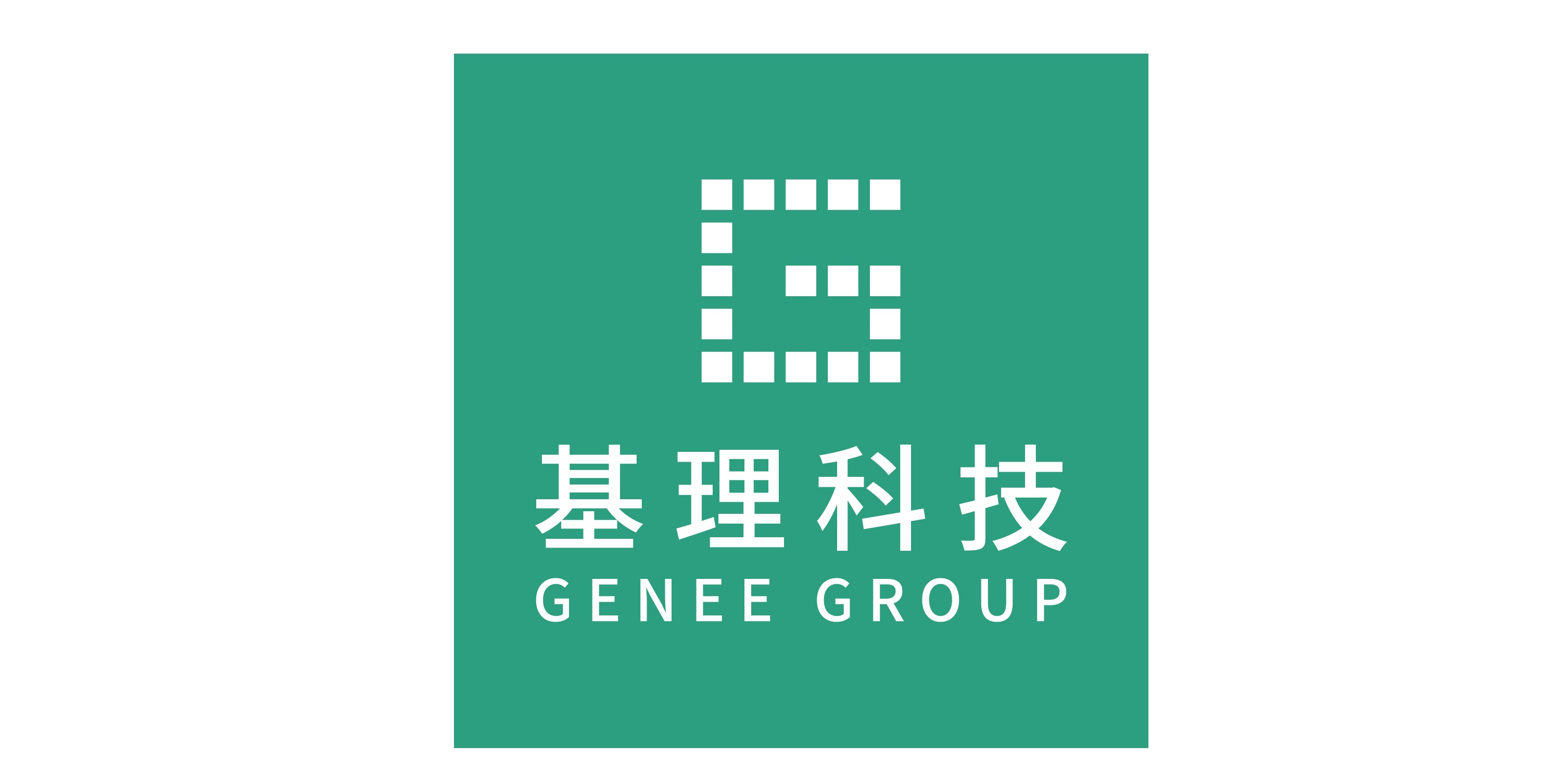
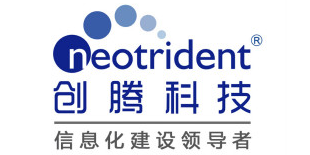

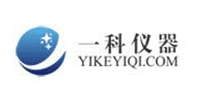








参与评论
登录后参与评论